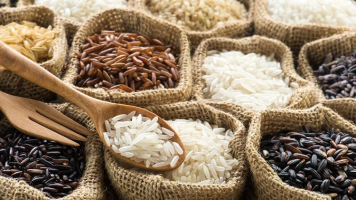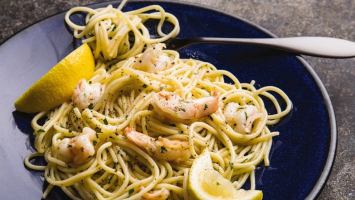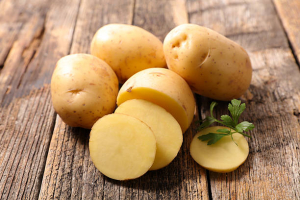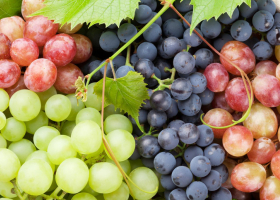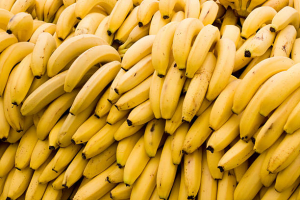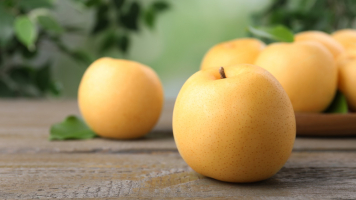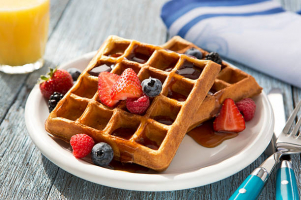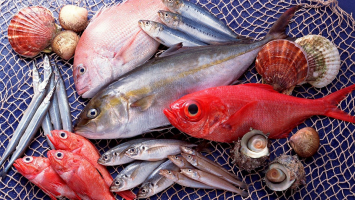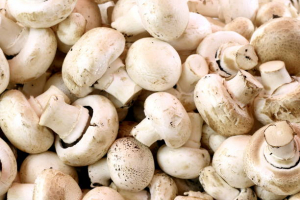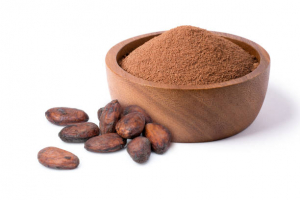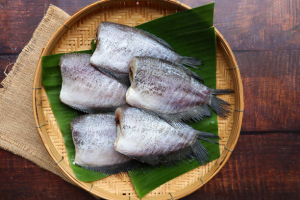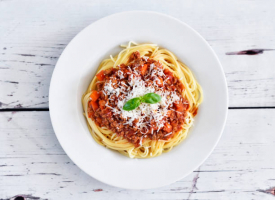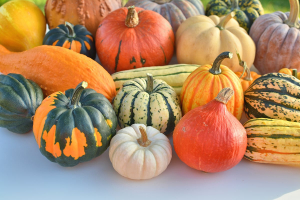Top 5 Types Of Potatoes And When To Use Them
Have you ever been in the grocery and couldn't decide which potato to buy? With so many variations available, it can be difficult to know which one would work ... read more...best for your recipe, so here's a guide to the many sorts of potatoes and what they're most suited to. This article will highlight the best potato varieties and when to use them.
-
The Russet Burbank potato variety was created in Idaho in the 1870s, and it is now widely accessible. Currently, 90 percent of the 13 billion pounds of potatoes harvested in the state each year are russets. The tuber is long, oval-shaped, and medium to big in size, with a rough brown exterior and a white to pale yellow inside. Russets are heavy in starch and are commonly used to make baked potatoes and French fries. Because of their low moisture content, they are also one of the greatest varieties of potatoes for mashed potatoes. They absorb a lot of fluids and have a light, delicate feel as a result.
You should peel eight russet potatoes and cut the tops and bottoms straight. In a cast-iron pan, heat the olive oil and fry the potatoes flat side down until golden on both sides. Cook for another 12 minutes per side after adding the butter, rosemary, thyme, garlic, salt, and pepper. Coat the potatoes with chicken stock and bake for 1 hour at 350°F. These potatoes will nearly melt on your tongue, giving them the moniker "melting potatoes" in French.
When to use: Fried (french fries), roasted (wedges), mixed into a creamy potato and leek soup.
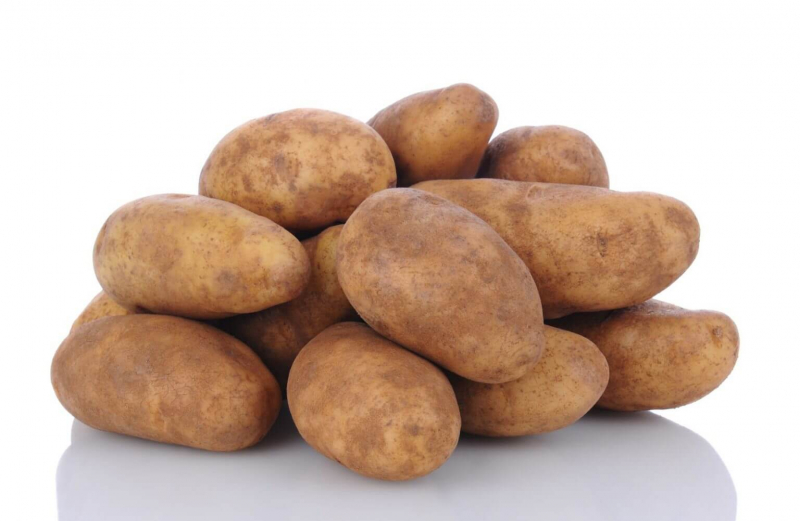
Russet Burbank potato 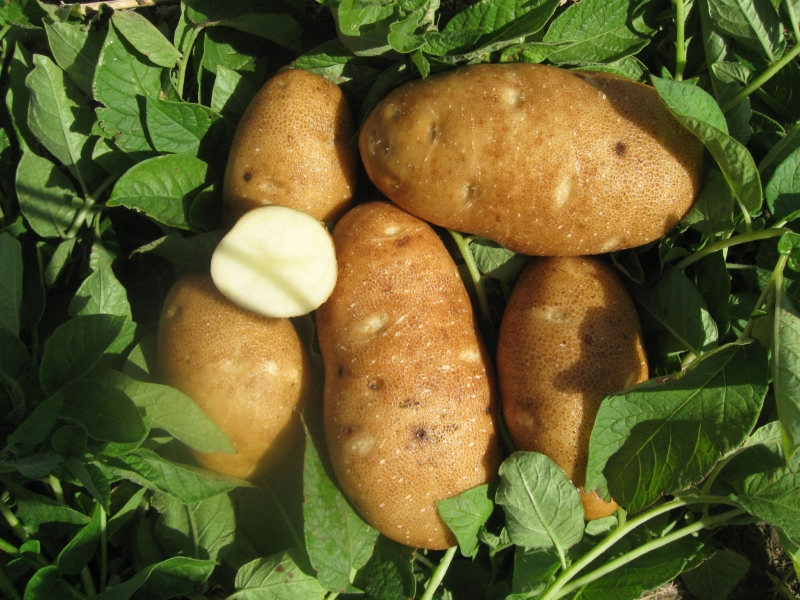
Russet Burbank potato -
Yukon Golds were discovered in Ontario, Canada (through the University of Nebraska-Lincoln) in the 1960s and 1970s. It took some time for these potatoes with golden brown skin and yellow meat to become popular, but now over 1800 acres are dedicated to this kind each year across the country. This adaptable species, which falls between a waxy and starchy potato, lends itself to a range of culinary ways such as roasting, frying, boiling, and sautéing.
Because Yukon Golds do not absorb much water, they produce creamy, rich mashed potatoes that are less likely to get sticky. Because they retain their form when cooking, these tubers are also great for a German potato salad. Yukon Golds harvested while they are fresh and tender are ideal for roasting and sautéing. Simply boil peel Yukon Gold potatoes in salted water for 20 to 25 minutes, then pan-fry them in olive oil with parsley and garlic until crispy. Finish with butter and parsley if desired. Your potatoes will be crispy on the exterior and soft on the inside, with a rich taste all the way through.
When to use: stews, soups, mashes.
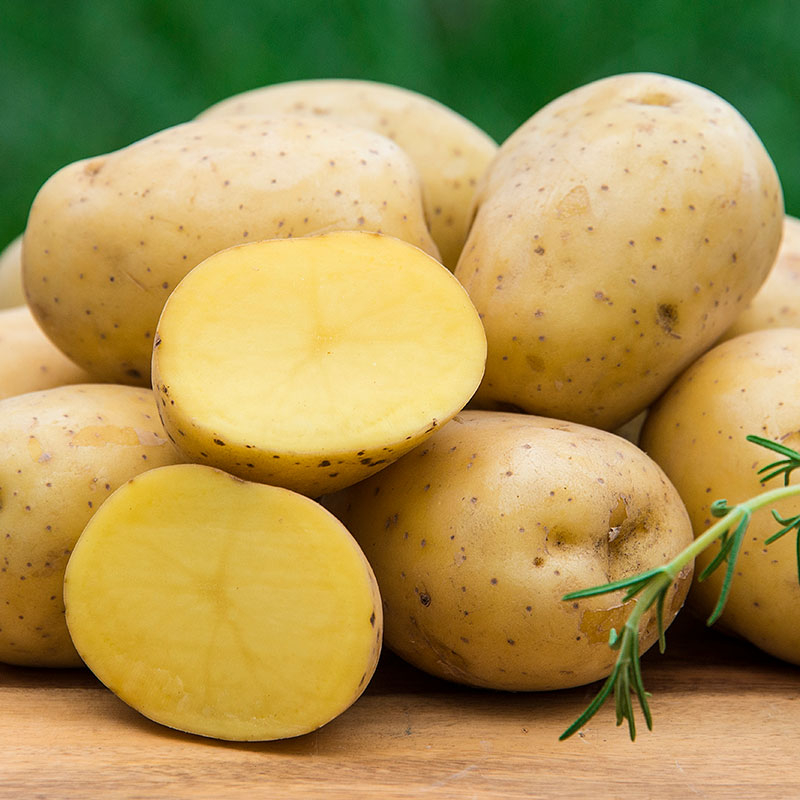
Yukon Gold 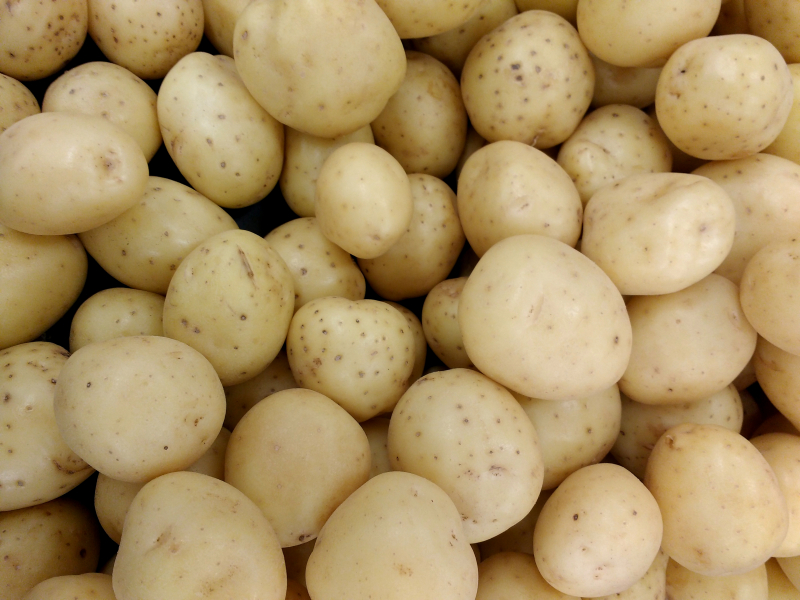
Yukon Gold -
German Butterballs are medium to large spherical potatoes with a pale yellow exterior and a golden waxy inside that were introduced in Idaho by David Ronniger in 1988. When cooked, these potatoes are creamy and soft, with a buttery taste, similar to Yukon Golds. While they are accessible all year, the best season is from late spring to early summer.
They work well for steaming, baking, frying, mashing, and pretty much any other preparation where Yukon Golds would work. They also make excellent roasting potatoes and, due to their naturally rich flavor, do not require a lot of seasoning. Toss your German Butterballs in halves or quarters (depending on size) with olive oil, salt, and pepper. Place them on a baking sheet and roast for 15 to 20 minutes at 400°F. Your potatoes should be golden brown and soft.
When to use: Roast them whole in foil over hot coals, steamed, fried into chips, and mixed into soups.
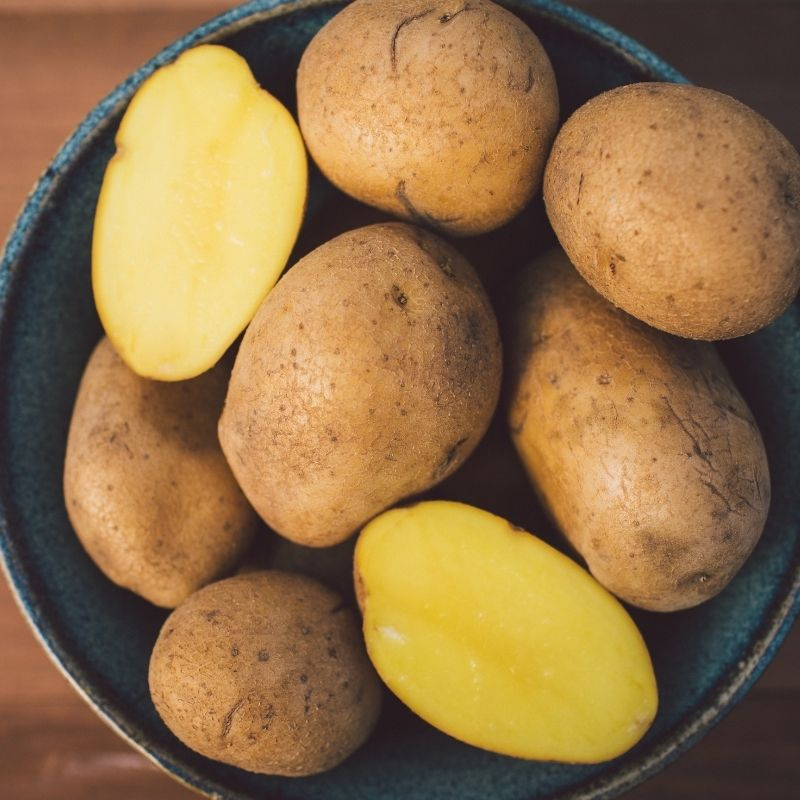
German Butterball potato 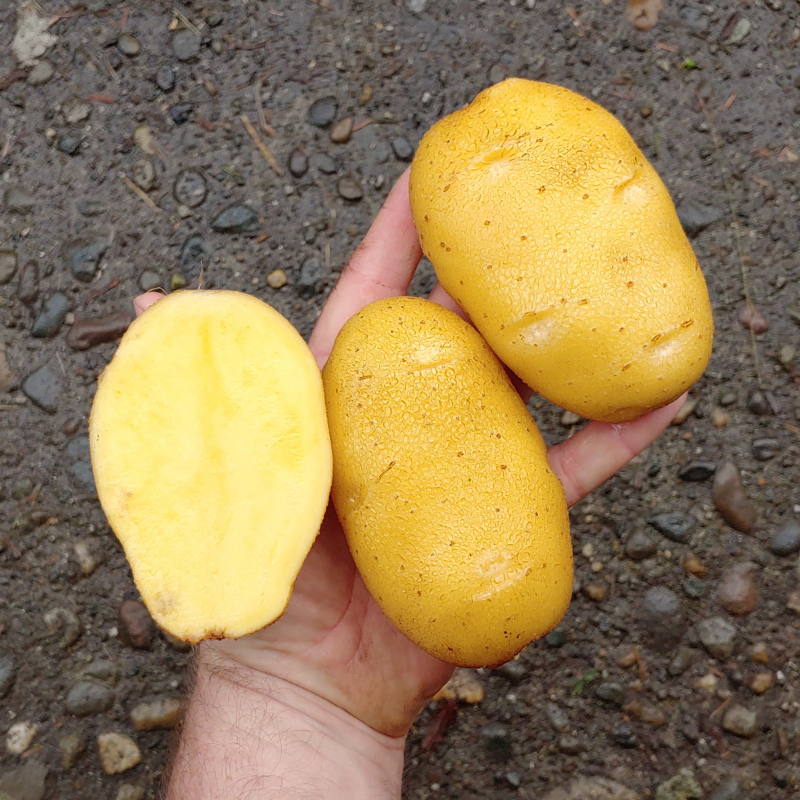
German Butterball potato -
Kerr's pink potatoes, which are sometimes misattributed to Ireland, were created in Scotland in the early 1900s by J. Henry Kerr. This type is named for the rose spots in its semi-rough skin that are commonly discovered full of deep pink eyes. It is recognized for its cream-colored meat and floury texture. They have a soft, fluffy texture when cooked. Because these potatoes do not hold up as well as others, it is critical not to overcook them to prevent them from turning to mush.
These are often used as an all-purpose potato in Ireland. Kerr's pinks are generally served to boil with their skins on, although they can also be mashed, roasted, or made into chips. To prepare Irish-style potatoes, boil the potatoes in salted water until they can be easily pierced with a fork. In a large saucepan, melt 2 to 3 tablespoons of Irish butter per pound of potatoes and stir in chopped parsley. Finally, add the drained potatoes, melted butter, and herbs to the saucepan. You may do this with full cooked potatoes or half or quarters of bigger ones.
When to use: Boil them quickly in water.
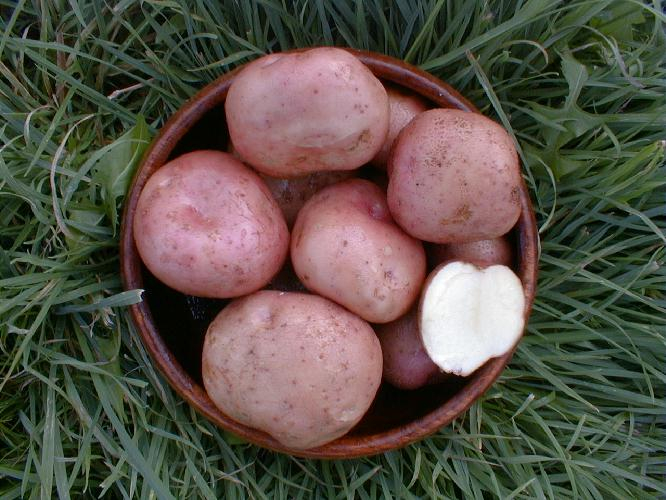
Kerr's pink potato 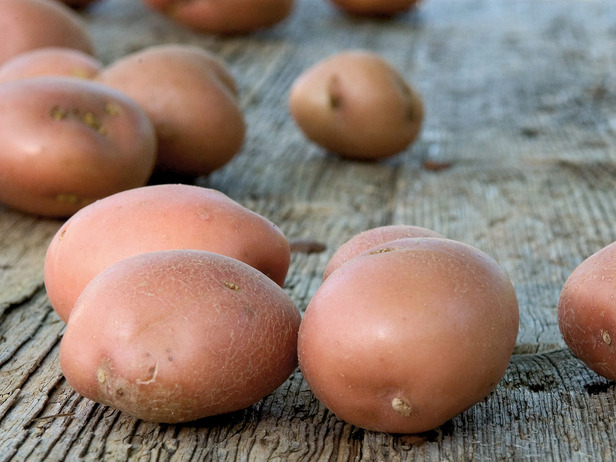
Kerr's pink potato -
These magnificent potatoes have a rich history that dates back over 800 years. Despite the French-sounding name, they were initially cultivated in Peru, not Europe; when they were imported to France in the 1800s, they were given the name Vitelotte Noir. They are now mostly produced year-round in France and the United Kingdom, while they can be found at specialty produce markets in the United States.
Vitelottes are tiny to medium-sized potatoes that have a long, thin form and a rough texture. The skin is dark purple to violet in color, with deep purple flesh dotted with white areas. Fortunately, they do not lose their color when cooked. They are frequently used in soups and purees, as well as fries and chips, to highlight the potato's distinctive color. Vitelotte makes a colorful potato salad when combined with pancetta, blue cheese, and cherry tomatoes.
When to use: Mash, roast them.
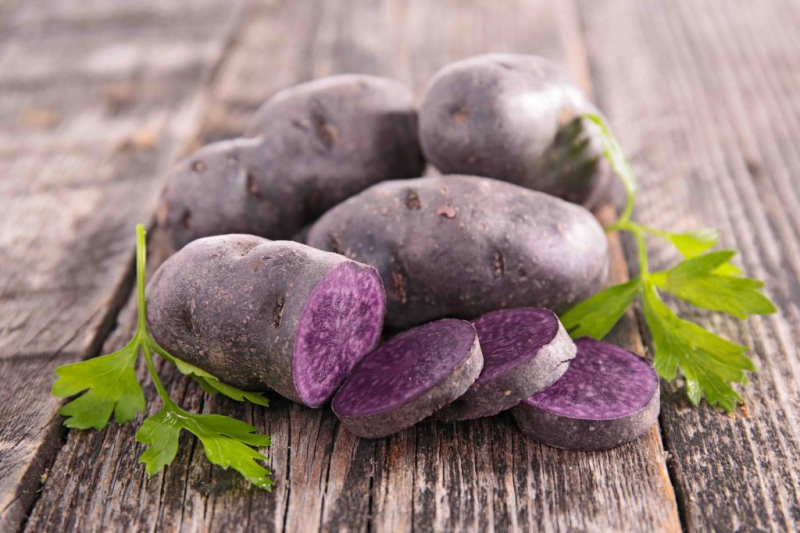
Vitelotte potato 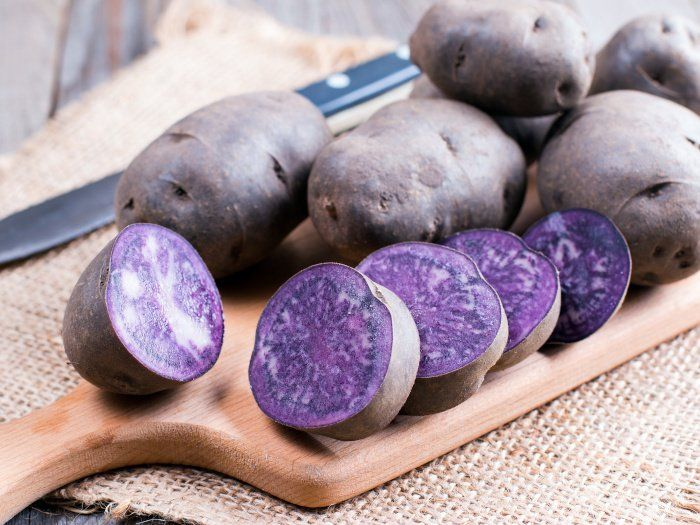
Vitelotte potato







